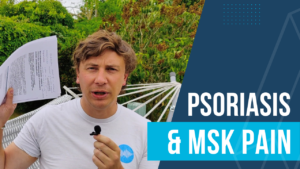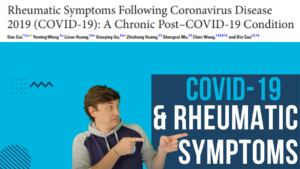Thank you to @TaiwanOzPhysio for bringing a paper to my attention which is used as the basis for this blog post (see reference at the end).
Clearly recognising rheumatology conditions is of interest to me… This paper is interesting because it literally attempted to test this skill in Physiotherapists, we will talk a little bit about it in this post.
Please do consider checking out my shop for further learning resources to help you with your clinical knowledge and help support me to continue providing blogs, videos and more!
As usual feedback is greatly appreciated and any further reading for me please send it my way!
PLEASE REMEMBER – THIS BLOG IS NOT A REPLACEMENT FOR CLINICAL REASONING, IF YOU ARE UNSURE GET ADVICE
Introduction
The paper we are discussing sent a survey to Physiotherapists in Canada, it contained four clinical scenarios describing the following conditions Rheumatoid Arthritis (RA), Ankylosing Spondylitis (AS), Knee Osteoarthritis (OA) and Low Back Pain (LBP).
Overall the respondents did very well, mostly getting the diagnoses correct and suggesting RA and AS be sent to Rheumatology and OA or LBP don’t need to go.
There were some limitations mentioned in the study regarding sample bias and clearly Canada may not represent the rest of the world but I am not so overly interested in these. I think of more importance here is the cases are described as “typical cases” which were chosen intentionally to create a reference point for further work. This mirrors my experience working with Physio’s in the UK that typical cases are rarely missed, it’s the fringe cases that are more of an issue (and makes the basis for me teaching!)
Thoughts
In this study the physios were shown to perform poorest in the AS scenario, and this is reflected in delay to diagnosis research. This was a typical case, the exact cases aren’t published but I can guess that the symptomology included protracted morning spinal stiffness, chronic low back pain, waking in the night and improvement with anti-inflammatories. We know that many Axial Spondyloarthritis patients present with a less classical picture or a picture complicated by other conditions (especially women) and this is where I see Physios (and other MSK therapists) struggle. This is further compounded by Peripheral presentations of Spondyloarthritis (PSpA) such as Psoriatic Arthritis and I have concerns over the increasing attention AxSpA gets over these peripheral cases.
We also need to consider the overlap of many Rheumatological conditions, the existence of Connective Tissue Disorders, the push to consider the BioPsychoSocial aspects of presentations and in the UK the judicious use of investigations (bloods and imaging).
BioPsychoSocial
In the MSK community we are moving away from the BioMedical model which assumes symptoms are related to structure and injury and towards a BioPsychoSocial model which considers more factors impacting on symptomology. I am fully onboard with this movement.
It does however run the risk of being applied to stringently to the individual (ironic given its aimed at being more individual) and concentrating too much on some aspects can lead to missing important factors. This is the same if you overweight any one factor. We need to still consider the “Bio” portion. I DO NOT think the “pendulum” has swung too far but trying to incorporate more aspects can unintentionally lead to missing things.
It is suggested that investigations and onward referral for back pain can be significantly reduced, in Spondyloarthritis presentations though they are necessary.
Judicious use of investigations
We don’t want to investigate those who don’t need it, but we absolutely need to when necessary. On my courses I try to push the appropriate times to refer and investigate using strong clinical reasoning processes. This all falls down if we don’t inherently understand the presentations of these conditions and their heterogenous nature.
Those in positions closer to the start of patient journeys (First Contact Roles, Private Practice, Assessment Services) need to understand this more than those who have greater levels of screening but still some conditions will slip through the net.
Concluding
I am delighted this study showed the Physios did well, I hope I have explained the reasons for MSK Therapists to increase their knowledge and awareness of these conditions. I would be fascinated to see similar studies done in the UK, with other MSK Therapists and with more complex presentations.
Why not have a look at my Clinical Reasoning EBook and test some of this out on yourself.
Thank you for reading and please do consider looking at my shop to support my efforts. My blogs will always remain free for those willing to read them.
These blogs are available in audio as well as the video above you can find links to subscribe to my podcast on all platforms here
Get me any feedback you might have so that I can grow and improve.
See you next time!
References
Ehrmann Feldman, D., Bernatsky, S., Orozco, T., El‐Khoury, J., Desmeules, F., Laliberté, M., Perreault, K., Grad, R., Zummer, M. and Woodhouse, L. (2020), Physical Therapists’ Ability to Distinguish Between Inflammatory and Noninflammatory Arthritis and to Appropriately Refer Patients to a Rheumatologist. Arthritis Care Res, 72: 1747-1754. https://doi.org/10.1002/acr.24081


